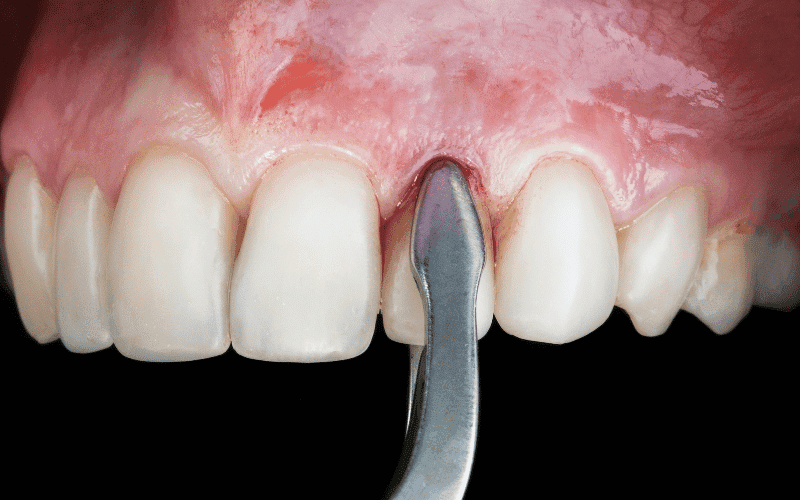In dentistry, the mere notion of tooth extraction typically elicits a mixture of fear and confusion. Behind the misconceptions, however, is a method that modern dentistry has refined into a fine art. Join us on an informative trip as we peel back the layers of myth to reveal the truth behind tooth extraction. This book attempts to modify attitudes and equip you with the knowledge needed to walk the route to a healthier, happier smile, from refuting pain-related phobias to discovering the wonders of dental technology.
The Common Myths Surrounding Tooth Extraction:
Myth 1: Tooth Extraction Is Excruciatingly Painful
Tooth extractions might be uncomfortable, but they should not be agonizing. More potent medications, such as oral sedatives or anesthesia, are required for more critical surgeries. An elevator is used to loosen the tooth in the gum before pulling it out with forceps. Modern dentistry has reduced the discomfort by using local anesthesia to numb the region. With recommended drugs and sufficient care, recovery pain may be bearable.
Myth 2: Tooth Extraction Leads To Facial Deformation
The worry of face distortion following tooth extraction is unfounded. Expert dentists design extractions to retain the natural curves of the face, while advances in restorative dentistry, such as dental implants and bridges, provide aesthetically acceptable options. The roots of teeth extend into the maxilla, which houses the nose and eye sockets. When a tooth is taken, all of its roots are removed, which may result in alterations in facial form. These alterations may occur, even if they may not necessarily cause harm. Consider avoiding these modifications if you need a tooth extracted.
Myth 3: Tooth Extraction Is Only For Severely Damaged Teeth
Tooth extraction is a frequent dental operation that dentists prescribe to prevent overcrowding, impacted wisdom teeth, and infection. It is essential for maintaining dental health and can help to prevent serious illnesses. Periodontal disease may be avoided with regular brushing and dental checkups. Digital radiography, for example, can minimize radiation exposure and improve patient comfort. For orthodontic therapy, teeth extraction may be required. Following an accident, dental procedures may be suggested, including bonding, crowns, bridges, or veneers.
Myth 4: Recovery Takes An Extended Period
Age, health, and devotion all impact recovery following extractions. Younger individuals heal more quickly, whereas elderly patients may recover more quickly. Diabetes and a smoking history both influence recovery. Smoking cessation and keeping a healthy blood glucose level help hasten recovery. Patient dedication, following the surgeon’s recommendations, and overall health are essential for a speedy recovery. Complications might impede healing, and complete recovery is not always feasible.
Also Read: How Long Does It Take To Recover From A Tooth Extraction?
The Facts Behind Tooth Extraction
Fact 1: Tooth Extraction Can Improve Oral Health
Contrary to popular belief, extractions benefit overall dental health. Removing badly damaged or diseased teeth prevents decay from spreading and saves neighboring teeth from injury.
Fact 2: Advances In Technology Enhance Precision
Extractions may now be planned and executed with unparalleled accuracy because of advances in dental technology such as digital imaging and 3D scanning. This reduces the procedure’s invasiveness and improves the entire patient experience.
Fact 3: Dentists Prioritize Patient Comfort
Dental practitioners prioritize patient comfort. Local anesthesia, sedative alternatives, and personalized care plans ensure that patients are at peace before, during, and after extraction.
Fact 4: Tooth Replacement Options Are Available
Dental developments provide clients with different tooth replacement alternatives, such as implants, bridges, and dentures, allowing them to regain both function and aesthetics after extraction. Dentists collaborate closely with patients to identify the best replacement based on their needs and preferences.
Advantages Of Tooth Extraction When Required:
Tooth extraction is a dental procedure that involves removing a tooth from its socket in the jawbone. While preserving natural teeth is generally a priority in dentistry, there are situations where tooth extraction is necessary. Here are five advantages of tooth extraction when required:
1. Relief from Pain and Discomfort:
Diseased or damaged teeth can cause severe pain and discomfort. Tooth extraction provides immediate relief by removing the source of the pain. This is often the case with severely decayed or infected teeth that cannot be effectively treated through other dental procedures.
2. Prevention of Infection Spread:
Infected teeth can spread bacteria to other parts of the mouth and even the rest of the body. Removing the affected tooth can prevent the infection from spreading and causing more severe health issues. This is particularly crucial for individuals with compromised immune systems.
3. Orthodontic Treatment:
Tooth extraction is sometimes part of orthodontic treatment plans. In cases of overcrowding or misalignment, tooth extraction can create space for proper tooth alignment through braces or other orthodontic devices. This helps achieve a more functional and aesthetically pleasing smile.
4. Prevention of Complications:
Extracting a problematic tooth can prevent potential complications. For example, impacted wisdom teeth can lead to pain, infection, and damage to adjacent teeth. Removing them proactively can prevent these issues and preserve overall oral health.
5. Preparation for Prosthetic Devices:
Tooth extraction may be necessary when preparing for dental prosthetics, such as dentures or dental implants. In cases where a tooth is beyond repair, extracting it allows for the placement of prosthetic devices to restore function and improve the smile’s overall appearance.
It’s important to note that tooth extraction is generally considered when all other dental treatment options are impractical or unsuccessful. Dentists always aim to preserve natural teeth whenever possible and resort to extraction only when necessary for the patient’s oral health and well-being.
Myths have shattered on this journey, and facts have become beacons of clarity. Finally, remember that tooth extraction is not an adventure into the unknown but a well-mapped path directed by accuracy and care. Armed with information, you hold the key to making sound dental decisions. Accept the reality, cast off the shadows of misinformation, and move on into a future where your smile is more than simply a mirror but a tribute to the empowerment that comes with learning and accepting the realities of dental care. Your dazzling, healthy smile is waiting for you.

